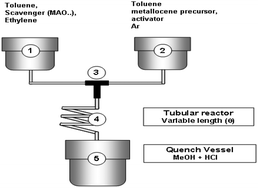Site count: is a high-pressure quenched-flow reactor suitable for kinetic studies of molecular catalysts in ethylene polymerization?†
Abstract
Understanding the kinetics of

- This article is part of the themed collection: Advances in metal-catalysed polymerisation and related transformations

 Please wait while we load your content...
Please wait while we load your content...